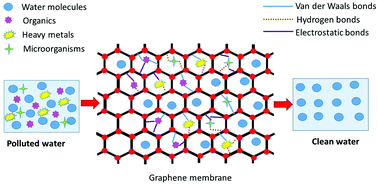Graphene, electrospun membranes and granular activated carbon for eliminating heavy metals, pesticides and bacteria in water and wastewater treatment processes
Abstract
Access to safe water has a significant impact on all parts of society, its growth and sustainability, both politically and socioeconomically. Consequently, the preservation of water and wastewater treatment have become a global challenge. A major contributor to water pollution is improperly or untreated industrial emissions; water resources can be contaminated with harmful pollutants, toxins or pathogenic microorganisms. Carbon's unique chemistry and its evolution due to recent advances in carbon-based technologies such as nanomaterials, offer significant potential for a variety of water purification strategies. This work details the application of carbon materials in combination with nanotechnology in the form of graphene, graphene composites, electrospun membranes and improved activated carbon in a myriad of water treatment systems with an emphasis on the removal of heavy metals, pesticides and harmful bacteria.

- This article is part of the themed collection: Recent Review Articles


 Please wait while we load your content...
Please wait while we load your content...